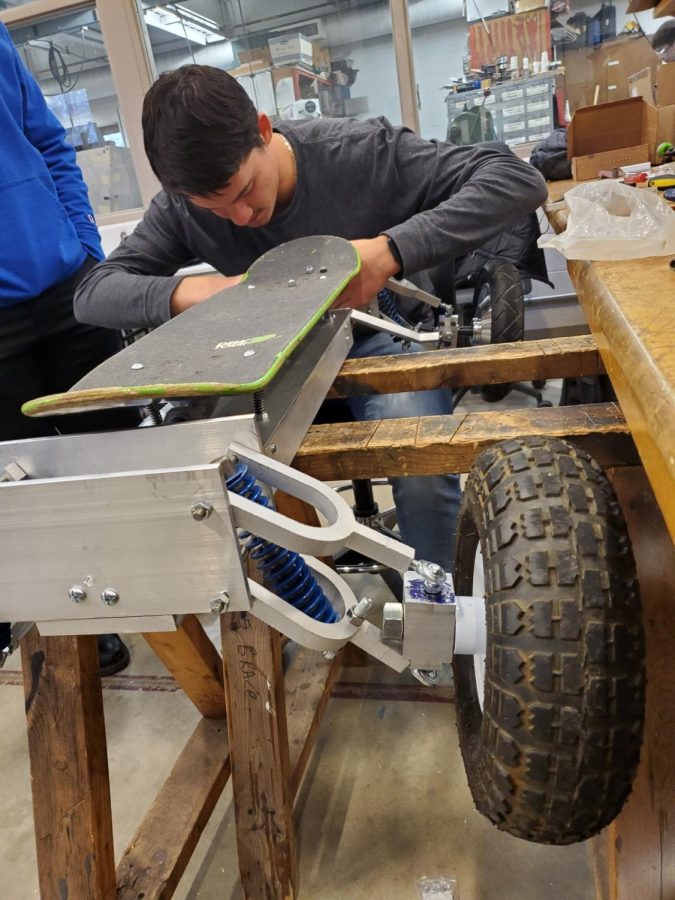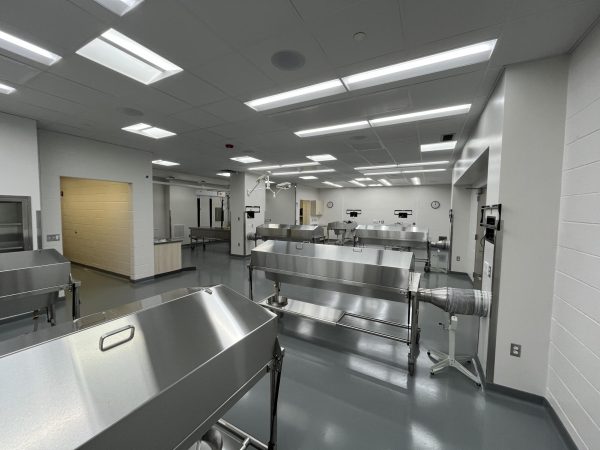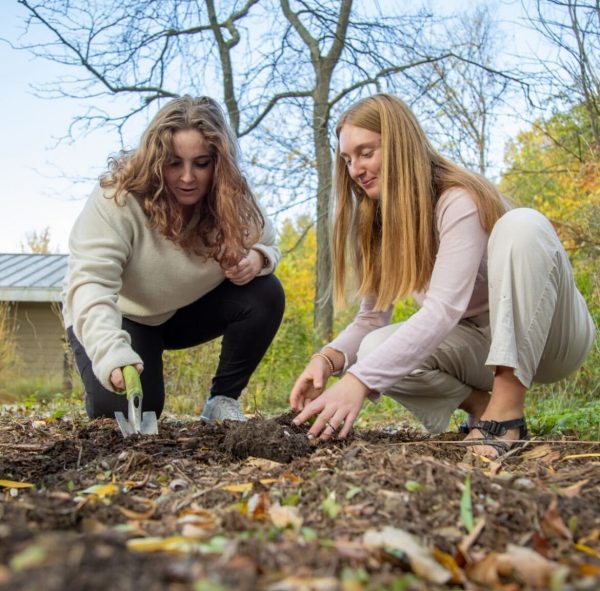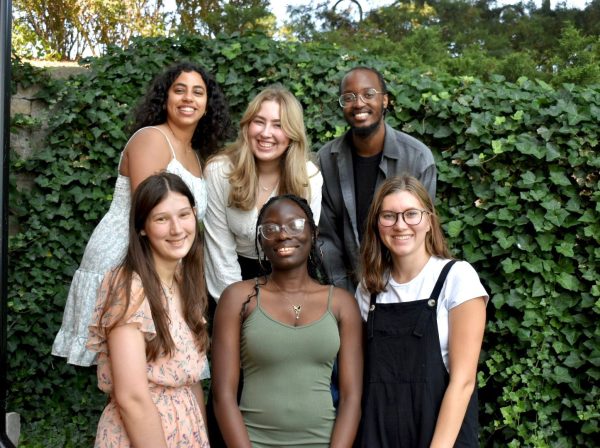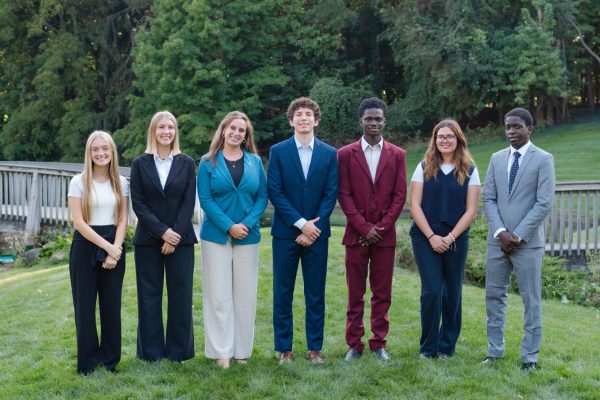Beyond resume building: Senior design projects pave road for future careers
Seniors developing senior design projects say the process gives them greater insight into their future career paths.
“I think it is worth all the hype,” said Braden Weber, a senior studying computer science and participating in the engineering program’s capstone senior design class. The course was “daunting” to Weber at first because seniors taking it spend an entire academic year working on an original project, from brainstorming, analysis, and design to, in some projects, developing a prototype. The class is challenging. Anthony Swanson, a senior studying mechanical engineering, told Chimes, “We’ve all had times where we’ve had to kinda go above and beyond and put in long hours.”
Students present their work at the senior design showcase on April 9; this year, the engineering class of ‘22 presented a total of 21 projects.
According to Mark Michmerhuizen, an electrical engineering professor, this showcase is an opportunity for professors as well as other engineering professionals to evaluate Calvin’s engineering program. Bryce Bundens, a civil and environmental engineering student, said it is also an opportunity for students’ work to be recognized as legitimate by practicing engineers.
One of the 21 projects presented at this showcase is titled “A Better Crib.” Weber and his teammates Kelsey Yen, JoJo Essuman and Belinda Sanju designed and built a prototype of a smart crib with rocking capabilities, a video and sound monitor, speakers, and accommodations for people with physical disabilities. Those functions interface with an app for easy control. According to Yen, a senior studying mechanical engineering with a computer science minor, the fall semester included brainstorming ideas, research, design, and analysis, while the spring semester began with analysis and quickly moved to construction on the different aspects of their project. Essuman, who is studying mechanical engineering, said that in this project, knowledge and creativity were very integrated. He created an original design for the crib on a computer, but then used things he learned in class to determine if the design was feasible.
“Engineering couldn’t be engineering without creativity because otherwise, it’s just math or physics or chemistry,” said Alex Brannen, an electrical engineering student. He worked with Swanson and other teammates on a mobility aid project. They designed and built a prototype of a wheelchair with a lifting and lowering mechanism that would allow older people or those with physical disabilities to continue to garden. Brannen said that he and his team wanted to design something that would help people and there was nothing like their design on the market yet.
For chemical engineering students, senior design projects and presentations look different. “Our only product is paper,” said Andrew Wilson, chemical engineering professor. According to Wilson, chemical engineers aren’t building prototypes, but rather designing chemical processes, running experiments, and using computer simulations. Though they don’t have prototypes, the creative aspect of engineering is still evident. “Two groups are working on first-of-kind technologies,” Wilson said. One of these innovative technologies is a new, greener and more sustainable way to produce ammonia.
Senior design projects are the proverbial feather in the cap of seniors graduating from Calvin with an engineering degree. Swanson said that having a completed project like the one he’s working on now looks “great on a resume”. However, resume building is not the main thing professors who guide these classes hope their students come away with, and neither is it the only benefit students take away from their time working on this project.
Michmerhuizen said that the purpose of senior design is two-fold. First, the senior design classes are structured so students will be “learning how to learn more,” according to Michmerhuizen. Second, it emphasizes interdisciplinary work. Engineers working on senior design projects must work with finances, ethical standards of design, communication and more, in order to create an effective prototype, Mitchmerhuizen told Chimes. “It’s cool that this program offers us other classes to take to develop the whole person,” Bundens said.
Wilson had somewhat different priorities for his students’ senior design. He told Chimes that he is “Trying to introduce [students] to the typical industry-style design process.” While the exact types of chemical engineering the students go on to pursue may be far different from what they worked on in Senior Design, Wilson said, “The process is what they come away with, and that is transferable to any particular topic or profession.”
Students understood the purpose of this capstone course to be an opportunity to gain real-world experience in the fields they are going into, as well as to utilize the skills they’ve learned in their time in school. Hannah Smith, an engineering student with environmental and civil concentrations, said the course gives her the chance to put into practice what she has learned in her academics and give her a glimpse of what her work after graduation will look like. For Essuman, “it’s about learning a lot of things you wouldn’t learn in class through failure and bashing your head against the wall.”.
Despite the many academic and professional skills students gained from these projects, every student Chimes spoke to attributed the most value to the interpersonal skills they learned while working in teams on long-term projects. Smith highlighted conflict resolution as a big area of growth, while Bundens, who wants to be a project manager, emphasized the importance of learning how to communicate well.
Given the variety of goals, purposes, and projects of Calvin’s senior design teams, success looks different for each one. “Every team has to define for themselves what success looks like,” Smith said. For Swanson, success is having a prototype that works, while for Bundens, success is creating a feasible site plan that the client is happy with.
Despite the challenges and difficulties of the senior design class, Weber is ultimately “really glad it is in the program,” because he says it is awesome to be able to brainstorm a project and then make it a reality.



